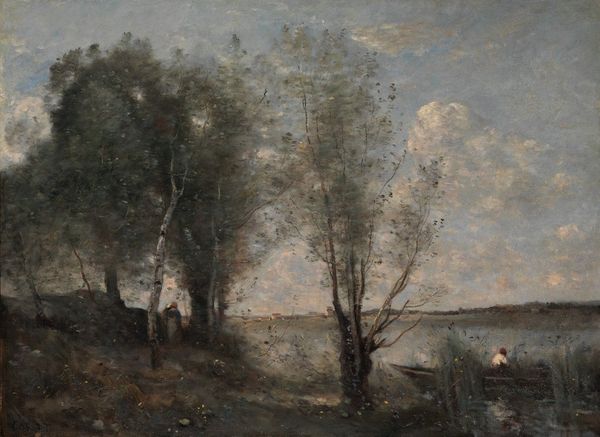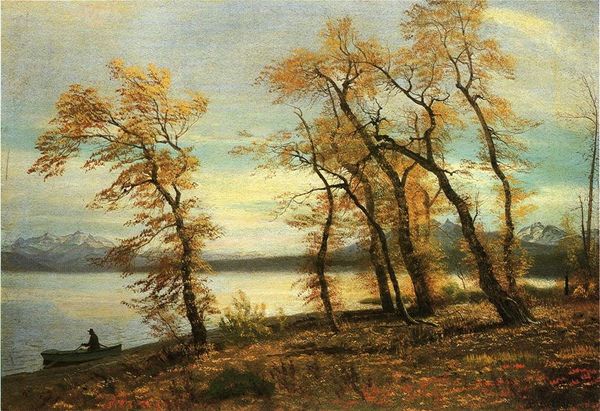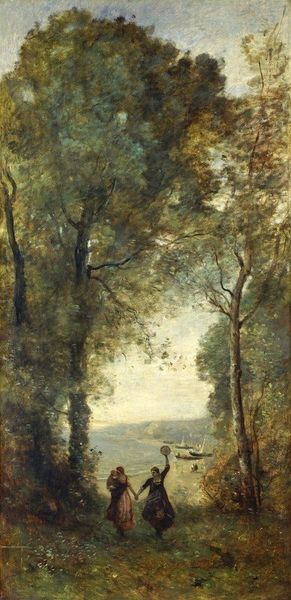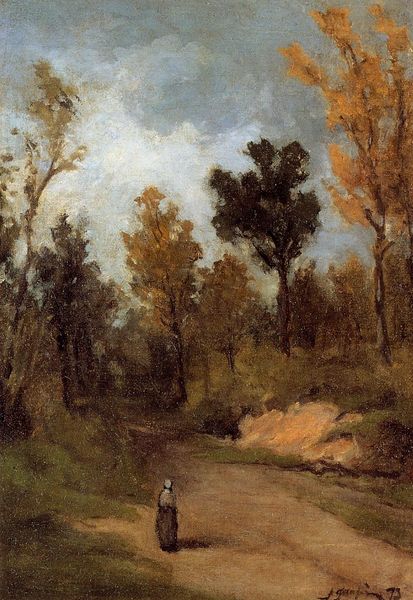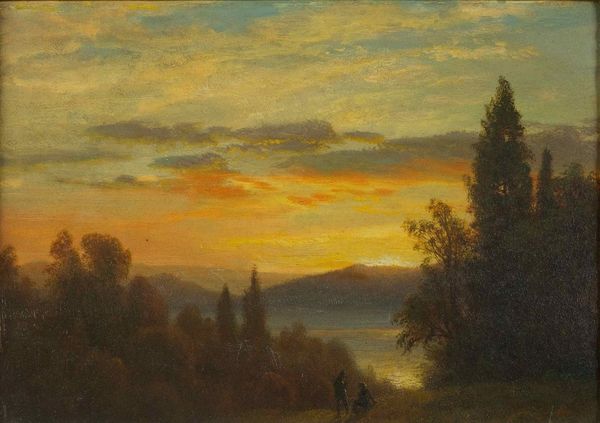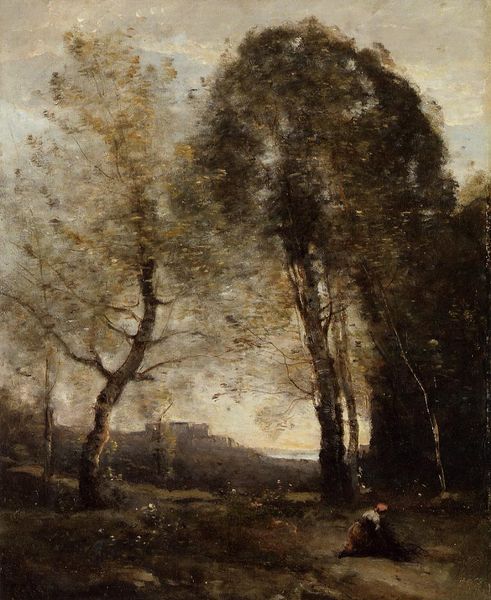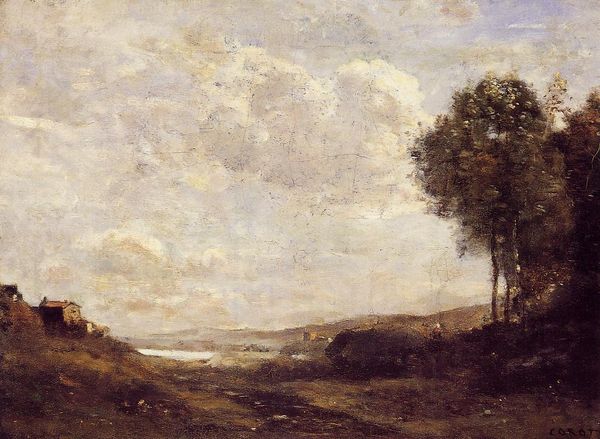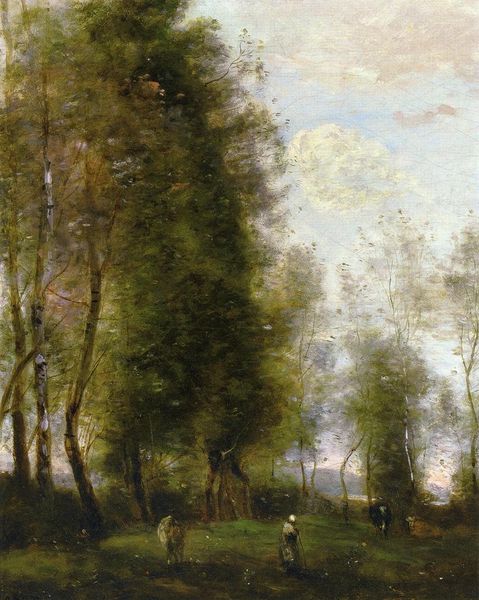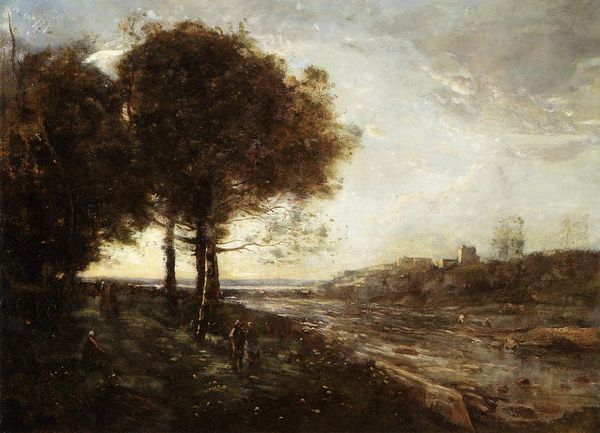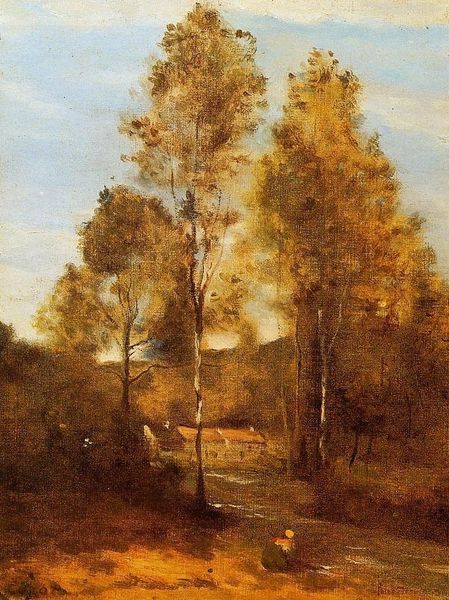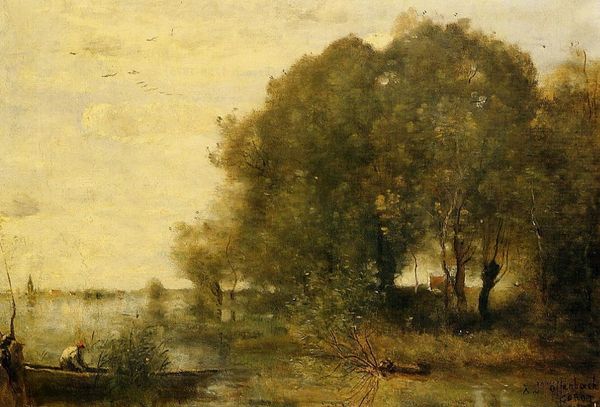
Copyright: Public domain
Curator: Henry Herbert La Thangue painted "Ligurian Bridle Path" around 1920. Editor: There's something both comforting and melancholic about this scene. It's a subdued palette, mostly browns and yellows, evokes a nostalgic feeling. Curator: Absolutely. La Thangue was interested in rural life and labor, particularly how it was changing in the early 20th century. His work often focuses on the dignity, as he sees it, of people who make their living off the land. It's important to him to convey that this is what the people who inhabit the area do for work. Editor: The solitary figure walking down the path contributes to that feeling. Her simple attire suggests a life intertwined with the earth. It almost reads like a pilgrimage route, don’t you think? Or at least a space of repetitive and ordinary action. The symbols that immediately grab my attention include the light filtering through the trees and its association with higher knowledge, revelation and guidance, which might mean there is a sense of promise for her journey forward! Curator: La Thangue embraced painting *en plein air*, so it’s fascinating to me that he focuses not on broad sweeping vistas of "untouched nature", but instead zooms in on human activity within the landscape. You can see, here, that it's not an "empty" natural space; it is filled with the implications of work. He showed a marked interest in how technological advancement changed the nature of labor for rural communities, particularly with the advance of British Imperialism in Europe and how that altered previous rural societies, as we can tell by some of his prior painting styles. Editor: And how fascinating that this image and feeling gets tied in with his interest in British Imperialism... One might expect he would capture moments where the work has actually improved for those affected by that political agenda. Yet that is clearly not what is being symbolized. Very Interesting... This gives this work a quality that persists into our time. Curator: It really emphasizes the crucial point that the natural landscape is never truly "natural," untouched as many seem to take it as. It is often co-created with our human needs and impact in the landscape that cannot be denied or escaped. Editor: Indeed. It also leads you to wonder where this figure will journey to, what awaits her down the path... and who she is as a subject for art.
Comments
No comments
Be the first to comment and join the conversation on the ultimate creative platform.


